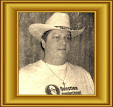Although the Bible is a book of history and is extremely detailed in many aspects, scoffers often refuse to consider it. Why? Because it's the Bible. They are using the genetic fallacy, and insist on verification from secular sources. This has happened many times (see, for example, "Archaeology Supports the Bible"). One area that is easy to mock is the dispersal of the growing world population at Babel.
Before the Genesis Flood, people packed a passel of years under their belts. Afterward, not so much. However, most of Noah's grandsons still managed to live a long time. Their descendants migrated, built cities, and did what many people still do today: name cities and regions after their patriarchs. The history of these folks is well established.
 |
| Credit: Freeimages / B S K |
When Noah and his family stepped out of the Ark, they were the only people on Earth. It fell to Noah’s three sons, Shem, Ham, and Japheth, and their wives, to repopulate the Earth through the children that were born to them after the Flood. Of Noah’s grandchildren, 16 grandsons are named in Genesis chapter 10.To finish reading, click on "The sixteen grandsons of Noah".
God has left us ample evidence to confirm that these 16 grandsons of Noah really lived, that the names the Bible gives were their exact names, and that after the Babel dispersion (Genesis 11:1-32) their descendants fanned out over the earth and established the various nations of the ancient world.
